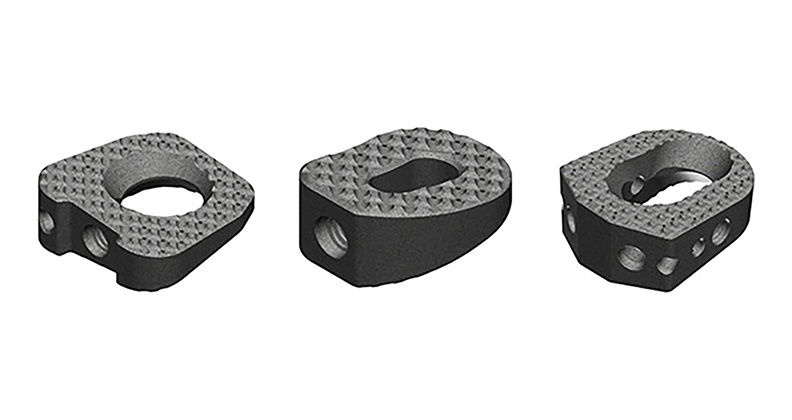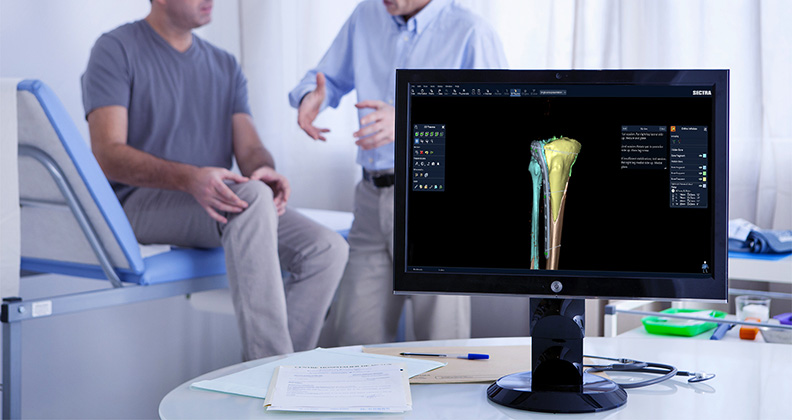
Orthopedic and surgical advancements are coming to the forefront almost daily. Procedures that once seemed to be highly invasive and complicated have become common surgeries that take place thousands of times a day around the globe. The number of total joint replacements, for instance, has skyrocketed as technology enhancements have streamlined the procedures. While our current ability to replace joints is impressive, there is always room to become more efficient and cost effective. We’ve identified a solution that is backed by a peer-reviewed orthopedic surgeon study.
What is the solution?
Operating room (O.R.) time is a valuable commodity, both from the perspective of time spent across the entire cycle of the medical device process, as well as labor and equipment. The ever-increasing price of O.R. time demands that orthopedic surgeries are performed as efficiently as possible to mitigate costs and decrease delays. Delays such as lack of instrumentation, disorganization, longer setup and teardown time in the O.R. and increased costs are all problems that could be reduced.
EZ-TRAX™ is a modular organizational system used to consolidate orthopedic instrumentation. EZ-TRAX creates a way to consolidate instrumentation, eliminate disorganization and eradicate waste. The trays can be configured to fit the needs of individual facilities or physicians and the instruments they regularly use for their orthopedic procedures. Many orthopedic trays contain a multitude of instrumentation and implants that a physician will never use. By consolidating the devices that will be used and organizing them in a coordinated manner, EZ-TRAX reduces turnover time, clutter, and redundant instrumentation.
Surgical Technology International (STI) Study Identifies Savings
EZ-TRAX has proven even more effective in time and cost savings when combined with ONE TRAY®, an FDA-cleared sterilization container intended to hold orthopedic devices during steam sterilization cycles.
In a study published in November of 2020 in STI Volume 37, [1] the use of EZ-TRAX for total knee replacement in conjunction with ONE TRAY tested efficiency and effectiveness in the O.R. versus the traditional wrapping process. The study investigated three different aspects: setup and breakdown in the O.R., processing time in the Sterile Processing Department (SPD), and finally, the costs involved in the O.R. and SPD, as well as the elimination of waste produced. The study found that O.R. set up time was decreased by an average of two minutes per procedure, while turnover time was decreased by three minutes. With O.R. time being a valuable commodity, a decrease in several minutes per case can be a huge benefit to a facility and the patient.
The ability to combine EZ-TRAX with the ONE TRAY sterilization container increases efficiency and adds speed to reprocessing time by eliminating the need for a dry and cool time. This also creates the ability to increase instrument turnover, allowing a facility to reduce redundant instrumentation with the significantly reduced processing time. STI indicates that the decontamination time was decreased by an average of four minutes to process the trays. The setup time of the trays decreased by a mean of eight minutes compared to the traditional wrapping of the instruments. Finally, and most significantly, 40 minutes were eliminated from the total time spent in the autoclave by utilizing ONE TRAY sterilization containers, allowing for the elimination of dry and cool time.[2] The whole process in the SPD was found to have been reduced by an average of 57 minutes. This significant time savings gives facilities the flexibility to add on cases, reduces delays and saves the facility money on each case.
Using the information above, STI used a variety of statistics and national averages to find the amount of savings the average facility could save by using EZ-TRAX and ONE TRAY. The study states that by reducing the time spent in the O.R. by roughly five minutes in every case, an average savings of $155,000 could be expected per year. The reduction of trays and time spent setting up and sterilizing in the SPD saves another $94,245 a year for a total savings of $249,245 by using EZ-TRAX and ONE TRAY. Beyond the direct monetary savings, waste was also reduced. By removing the need for vast amounts of wrap, the study states that an average of over 10,000 ounces of waste would be irradicated, from 10,590 ounces down to just 450 ounces with ONE TRAY and EZ-TRAX.
O.R. efficiency plays a critical role in surgeon performance, patient outcomes and hospital profitability. The combination of ONE TRAY and EZ-TRAX has limitless benefits for ever-advancing process improvements.
More in-depth information on these systems can be found in the STI study and a video interview with Robert C. Marchand, M.D.
[1] Authors, Kevin B. Marchand, BS: Kelly B Taylor, RN: Michael A. Mont, MD: Hytham S. Salem, MD: Robert C. Marchand, MD. Surgical Tray Optimization and Efficiency: The Impact of a Novel Sealed Sterile Container and Instrument Tray Technology: SURGICAL TECHNOLOGY INTERNATIONAL Volume 37 – Nov, 2020 – PMID: 33245139, STI.: page numbers. Page 349-355
[2] Authors, Kevin B. Marchand, BS: Kelly B Taylor, RN: Michael A. Mont, MD: Hytham S. Salem, MD: Robert C. Marchand, MD. Surgical Tray Optimization and Efficiency: The Impact of a Novel Sealed Sterile Container and Instrument Tray Technology: SURGICAL TECHNOLOGY INTERNATIONAL Volume 37 – Nov, 2020 – PMID: 33245139, STI.: page number Page 353




